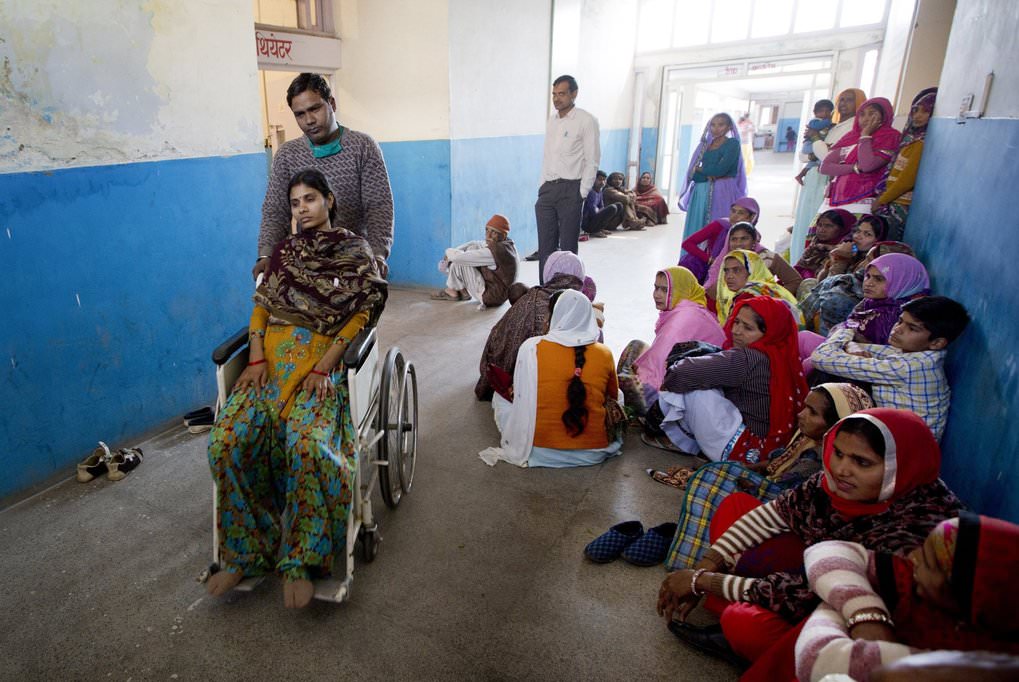Ever since news of the study undertaken for the male contraceptive pill being halted came out, we’ve seen a barrage of think-pieces and terrible scientific writing. Our online conversations range from asking men to stop being “little bitches” on the Daily Show (Dammit Noah, you were doing so good!) to asking the eternal question “Will we believe a man who says he’s on the pill?“. The stink the study has kicked up is pretty similar to a tough love-preaching parent telling you to hush up and take it because they had it much worse when they were your age. Take your mild depression and suck it up is basically the message we’re conveying.
What we’re essentially doing is telling men that since women have had to endure years of painful side-effects, they should be on board with it too. Yes, the issue of contraceptive pills is sexist. But the sexism has more to do with the fact that contraception remains a burden that a woman has to bear because of shoddy health care and less to do with the fact that the study was halted. Let’s remember that it’s a good thing that ethical codes that govern scientific study are stricter in the 21st century.
To say that we’ve been reductive about the issue is a understatement. The study, which is available online, shows that in 2008, 320 men participated in the study voluntarily, knowing the side effects that could possibly occur. By 2011, 20 men had dropped out of the study due to adverse side effects, a regular amount for most clinical trials. Many others cited similar side effects such as acne (45.9%), pain at site of injection(23.1%), muscle pain (16.3%), increased libido and emotional disorders (16.9%- However, 63 out of 65 said the severity of these disorders was mild. Strangely enough, 62/65 of these participants were from the Indonesian centre).
Keeping in mind the large percentage of AEs (adverse effects) the study was halted by two independent committees who were monitoring the safety of the trial. The study has 95% efficacy but four men remained infertile after a year of discontinuing the shot and one man hasn’t yet regained fertility.
The invention of the pill for women was intended to serve as a tool, to end the popular belief that all women are baby-machines raring to go whenever their mate so chooses. The essence of our womanhood was no longer supposed to be synonymous with motherhood and with the pill came the promise of sexual freedom, the much-coveted notion of choice.
Something Western feminism tends to skip while recounting the history of the pill is how its invention was steeped in unethical practices and racist ideas. In a fascinating article for The New Republic, Ann Friedman talks about how volunteers in the primary study were unaware of both the purpose of the pills or its side effects since there were no rules governing medical testing at that time. After a large number of drop outs, the study was shifted to Puerto Rico where contraception was legal (unlike America at that time) but women dropped out again. The study then forced women in the Massachusetts Mental Asylum and the San Juan medical school to participate till they eventually found a willing group. Turns out all they had to do was tell women what the drug was for. Sure, in comparison to this non-consensual and unethical practice, it looks like men have it easy- but is that really what we want to be fighting about?
As brown feminists, it’s important for us to differentiate between issues that apparently plague the American population and take a look at things closer home (I see your Trump and raise you a Modi). Contraception in India and women’s health care has a long, long way to go.
A majority of women in rural India have no access to birth control or awareness of the same, are forcibly sterilized at camps and there has been a decline in use of contraception even as awareness about the same grows.
Last year, in a piece for The Ladies Finger, Menaka Rao talked about the new hormonal contraceptive injection-DPMA that was introduced in India while detailing the classist and casteist attitude towards it that prevailed among health care professionals. Doctors admitted that they were fine administering the shot to women in public hospitals despite common side effects like irregular periods, loss of bone density, increased risk of strokes and blood clots, depression and insomnia. They would not do the same to their patients in private clinics because of fear of the same side effects.
Even the use of the contraceptive pill for women- which is restricted to a very, very small and mostly urban demographic, comes with a volley of similar side effects that women aren’t made aware of. Injectables and pills are made available and used widely before any testing is done, something that the Indian Centre for Medical Research should be held accountable for.
A lot of arguments cite the risk of pregnancy over those of the side effects. Wherein, the real problem is that most women are not told of alternate methods of contraception and are not aware of their side effects. More importantly, no measures are taken to deal with these side effects because our infrastructure doesn’t allow it. The government, in order to reign in the growing population problem, will use reactionary methods such as sterilization camps in which women are disproportionately targeted and will endanger the lives of rural women over and over instead of attempting to create awareness among men.
The sexism lies in the fact that in this manner, women have to bear the burden of contraception. It lies in the fact that proper medical testing is not done before legalising contraceptive methods. It is in the fact that we have such disregard for the agency of these women that their bodies will be tampered with without precaution or their knowledge.
So while we fight for our right to better contraception and better health care, let’s remember that in India, the real fight for women’s rights has to deal with classism and casteism just as much.
About the author(s)
Freelance writer based out of Mumbai. Intersectional feminist and lover of pop culture references.





Love this. Another problem in urban India is how hesitant doctors are about prescribing and talking about any birth control method with single patients ( as a preventative method). Stigma certainly makes the urban Indian woman less aware of her options…perhaps in part explains the high usage of emergency contraception.
I love this piece Neha. I also always wonder why the Sterlization camps target women.The operation for female sterilization is far more invasive than the one for vasectomy. However Men it seems would rather never go under any knife because it would impact their man
hood. It also means that the man is free to procreate further . How will this help the population since we are aware that polygamy is pretty rampant among hindus /tribes /other categories as well.
“Women are five times as likely to die from sterilization than men, the Encyclopedia of Women and Gender reports. And both procedures have similar success rates when it comes to preventing pregnancies.
Still, more than one third of married Indian women undergo sterilization, versus just 1% of Indian men”
“Less than one percent of the Indian male population chooses to undergo the sterilization procedure, while nearly four out of ten women choose sterilization — the highest percentage in the world, according to the World Health Organization. Men’s reluctance, centered on cultural taboos, comes despite more generous financial compensation for the procedure: In most states, men who choose to be sterilized are paid $33 by the Indian government. Women, on the other hand, typically receive $23”
So yes the whole contraception game is sexist.
http://www.acog.org/Patients/FAQs/Sterilization-for-Women-and-Men
http://www.telegraph.co.uk/news/worldnews/asia/india/8340679/Indian-man-with-39-wives-94-children-and-33-grandchildren.html
http://timesofindia.indiatimes.com/india/29-3cr-wives-28-7cr-husbands-Census-bares-polygamy-truth/articleshow/46437481.cms
https://en.wikipedia.org/wiki/Polygamy_in_India
https://qz.com/296019/vasectomies-are-cheaper-and-safer-than-female-sterilization-so-why-dont-more-men-get-them/
http://america.aljazeera.com/articles/2014/11/14/women-india-sterilization.html